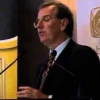The recently reported September statement of account of the Bank for International Settlements --
https://www.bis.org/banking/balsheet/statofacc200930.pdf
-- discloses that the bank's use of gold swaps increased again to an estimated 520 tonnes, up 36 tonnes from August. This volume of gold is larger than the 504 tonnes held by the European Central Bank and unquestionably represents a substantial and seemingly growing demand for gold.
No explanation of this demand has been given by the BIS.
This gold is supplied by bullion banks via the swaps to the BIS gold sight accounts of major central banks such as the U.S. Federal Reserve.
The BIS' use of gold swaps and derivatives has been extensive so far this year, with September's level being the highest in the period since August 2018 as highlighted in Table B below. By contrast, in May 2019 the bank was carrying only 78 tonnes in swaps.
The September estimate of the bank's gold swaps is also higher than any level of swaps reported by the BIS at its March year-end since March 2010. Based on a review of the bank's annual reports, it seems that the BIS was not involved in gold swaps for at least 10 years prior to 2010. As can be readily be seen in Table A, the BIS has used gold swaps extensively since its financial year 2009-10.
-------------------
Table A
March 2010: 346 tonnes.
March 2011: 409 tonnes.
March 2012: 355 tonnes.
March 2013: 404 tonnes.
March 2014: 236 tonnes.
March 2015: 47 tonnes.
March 2016: 0 tonnes.
March 2017: 438 tonnes.
March 2018: 361 tonnes.
-------------------
The BIS rarely comments publicly on its banking activities, but its first use of gold swaps was considered important enough to cause the bank to give some background information to the Financial Times for a report published July 29, 2010, coinciding with publication of the bank's 2009-10 annual report:
The general manager of the BIS at the time, Jaime Caruana, said the gold swaps were "regular commercial activities" for the bank, and he confirmed that they were all carried out with commercial banks and so did not involve other central banks.
Hence it is reasonably likely that the gold swaps as of September 2020 represent the greatest use of them by the BIS for 20 years.
The swap transactions create a mismatch at the BIS, which ends up being long unallocated gold (the gold held in BIS sight accounts at major central banks) and short allocated gold (gold required to be returned to swap counterparties).
This mismatch has not yet been reported as such in the bank's annual reports.
The table below shows the estimated swap levels since August 2018. It can readily be seen that the BIS is actively involved in trading gold swaps and other gold derivatives with changes from month to month reported in excess of 100 tonnes in this period.
-------------------
Table B
Month ..... Swaps
& year ... in tonnes
Sep-20...../ 520
Aug-20...../ 484
Jul-20 ..... / 474
Jun-20 .... / 391
May-20 .... / 412
Apr-20 .... / 328
Mar-20 .... / 326*
Feb-20 .... / 326
Jan-20 .... / 320
Dec-19 .... / 313
Nov-19 .... / 250
Oct-19 .... / 186
Sep-19 .... / 128
Aug-19 .... / 162
Jul-19 ..... / 95
Jun-19 .... / 126
May-19 .... / 78
Apr-19 ..... / 88
Mar-19 .... / 175
Feb-19 .... / 303
Jan-19 .... / 247
Dec-18 .... / 275
Nov-18 .... / 308
Oct-18 .... / 372
Sep-18 .... / 238
Aug-18 .... / 370
* The estimate originally reported by GATA was 332 tonnes, but the BIS annual report states 326 tonnes. It is believed that this difference arose because the gold price used to calculate the GATA estimate was lower than the price used by the BIS itself. GATA uses gold prices quoted by USAGold.com to estimate the level of gold swaps held by the BIS at month-ends.
-------------------
As noted already, the BIS in recent times has refused to explain the reasons for its activities in the gold market, nor for whom the bank is acting:
http://www.gata.org/node/17793
Despite this reticence the BIS is almost certainly acting for central banks, as they are the BIS' owners and control its Board of Directors.
This refusal to explain prompts some observers to believe that the BIS acts as an agent for central banks intervening surreptitiously in the gold and currency markets, providing those central banks with access to gold as well as protection from exposure of their interventions.
--------
Robert Lambourne is a retired business executive in the United Kingdom who consults with GATA about the involvement of the Bank for International Settlements in the gold market.
* * *

